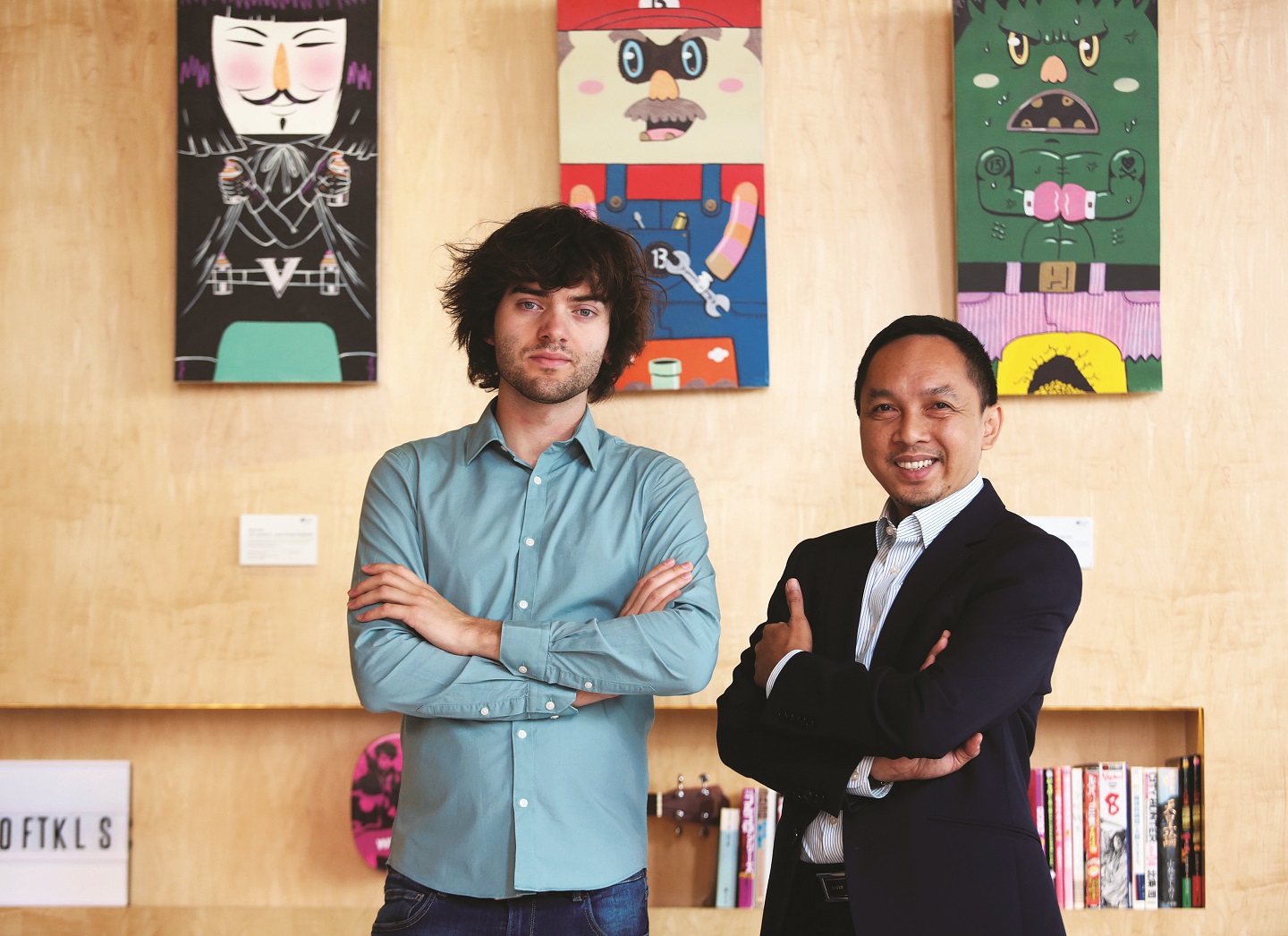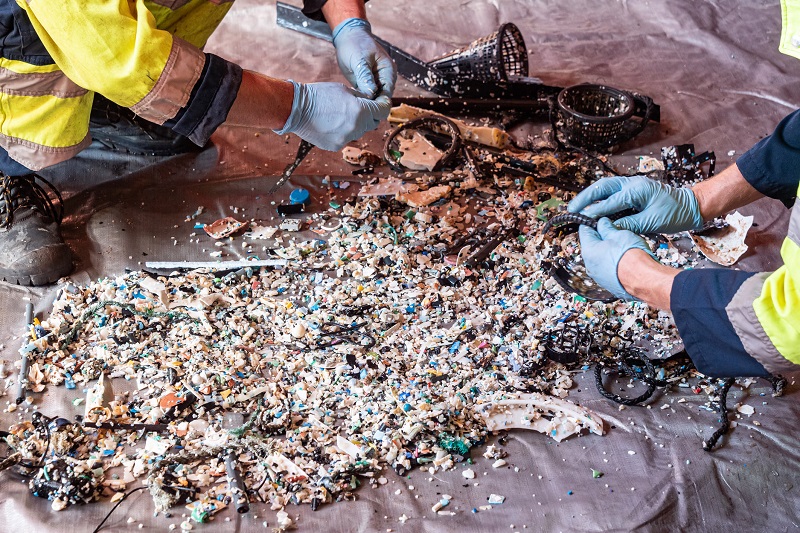
Boyan Slat (left), founder of non-governmental organisation The Ocean Cleanup and Syaiful Azmen Nordin, managing director of Landasan Lumayan Sdn Bhd (Photo: Sam Fong/The Edge)
As I write this, 16-year-old environmental activist Greta Thunberg is sailing from Virginia, the US, to Madrid, Spain, to attend The 2019 United Nations Climate Change Conference (COP25).
Why this lengthy method of travel? So that she would not add more carbon to the atmosphere. We have reached the stage where children — whose biggest worries should be growing pains and figuring out who they are — are the ones taking the reins in the fight against climate change. They are the ones picking up the slack as countless decision makers inexplicably continue debating whether climate change is real.
At the age of 18, Dutch scientist and aerospace engineering school dropout, Boyan Slat, created a system that catches floating waste in the ocean. Now in his mid-twenties, the founder of non-governmental organisation The Ocean Cleanup has redoubled his efforts by clearing plastic waste in rivers with the Interceptor.
“The Interceptor is a fully automatic, solar-powered plastic extraction device that is comprised of various parts. We have the barrier, which concentrates the plastic to a central point. Then you have a conveyor belt that lifts the plastic out of the water. You then have a shuttle, which is basically a basket on wheels, that distributes the plastic across various dumpsters on a barge. When the barge is full, it is towed away for recycling. It’s really this fully automatic method that is driven by the river. The river brings the plastic towards the machine and the waste is then automatically taken out, distributed and stored in the dumpsters,” Slat tells Options.
Malaysia has been chosen as the second country, after Indonesia, to use the Interceptor. “It was the end of 2018 when we were approached by The Ocean Cleanup. They knew that we were cleaning the Klang River,” Syaiful Azmen Nordin, managing director of Landasan Lumayan Sdn Bhd, tells Options. “Based on their studies, Klang River is one of the main polluters of the oceans … They introduced a new technology to enhance, complement and increase the effectiveness of our river-cleaning activities. We discussed the agreement and finally, in mid-August, the unit arrived and is now fully operational.”
Landasan Lumayan, an organisation under Menteri Besar Selangor (Incorporated), was created to focus on the Selangor Maritime Gateway (SMG), an initiative set up by the Selangor state government in March last year to clean, rehabilitate and rejuvenate Klang River. As a start, seven log booms — a barrier in the river designed to collect floating objects — were set up. “We had the permanent log booms to trap waste from KL and all the tributaries along the river. Since 2016, we have managed to collect 50,000 tonnes of waste ... We could not fully block the river because we have to allow boats to pass through, so our log booms only managed to catch 60% of the waste,” Syaiful explains. “Then came the Interceptor to complete our river-cleaning operation.”
There are numerous factors that The Ocean Cleanup looks at when choosing countries to work with. “We now have four. It was driven by a few things. One is that we’re looking for some of the heaviest polluted places in the world. We also look for local interest and enthusiasm for what we do. We saw that combination in Jakarta, here, Vietnam and the Dominican Republic,” adds Slat.
According to the data The Ocean Cleanup collected with Deloitte, the price tag of plastic pollution in Malaysia is roughly US$280 million, so cleaning the rivers would save the government an incredible amount of money. This pollution affects the tourism, fisheries and agriculture sectors. “The Klang River has been neglected for quite some time. Our community does not take the river seriously, so now we have a problem of waste. The Selangor state government sees the river as an asset. How can we unlock the value of this asset? When we do river cleaning, we want to increase the level of awareness of people. River dumping is the biggest challenge we face,” says Syaiful.
Since 2015, the water quality of the river has improved and it is not as pungent as before, says Syaiful, adding that Landasan Lumayan is now working with fishermen’s associations to develop more tourist-friendly activities.
The rejuvenation arm of SMG plans to enhance Taman Awam Pangkalan Batu in Klang with an interactive park that offers boat rides and river taxis. From this park, visitors will be able to see the Interceptor at work.
More Interceptors
Admitting that it is not ideal for the rubbish collected by the Interceptor to be transported to a landfill, Slat points out that it is a start. “In general, we aim for the best available local solution and, if possible, we even improve on that with recycling. But of course, [sending the rubbish to] a well-managed landfill is a thousand times better than it ending up in the ocean. We always perform audits to ensure that it doesn’t end up somewhere harmful or back in the environment,” he explains.
The next challenge for Landasan Lumayan is to recycle the collected plastic rather than sending it to a landfill.
ocean_clean_up.jpg

For The Ocean Cleanup, the next stage is increasing the number of Interceptors and participating countries. After deploying two this year, Slat hopes to increase the number to 10 next year, then 50, 100 and so on. “Our goal is to actually reduce the amount of plastic in the oceans by 90%. We aim to reduce ocean garbage patches by 50% in five years. In the rivers around the world, we want to install the Interceptor to stop roughly 80% of the plastic outflow by 2025.One thousand rivers are responsible for roughly 80% of the inflow of rubbish into the oceans,” he explains.
For the average Joe, there are ways to help reverse climate change other than to stop dumping trash into rivers and working towards a plastic-free lifestyle. Slat suggests being part of the government’s discussion on climate change, express your concerns and push for legislative action.
While some “adults” are still arguing about whether global warming is real, young people are becoming activists, participating in school strikes to raise awareness, creating systems that work towards fixing the problems and bringing the change we so desperately need. The unfortunate reality is that for most grown-ups, this climate change initiative needs to appeal to our capitalist greed — what can we get out of it? But by seeing how much this pollution is costing our governments and communities, one can hope that even the more materialistic are swayed. Donate your time and volunteer with NGOs that strive to fight this battle head on. It is time to make the difference as we are almost too late.
This article first appeared on Dec 2, 2019 in The Edge Malaysia.


